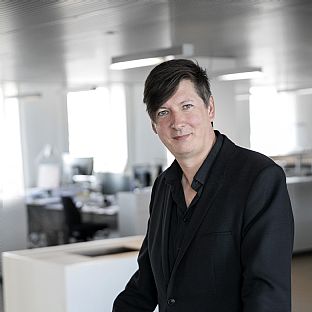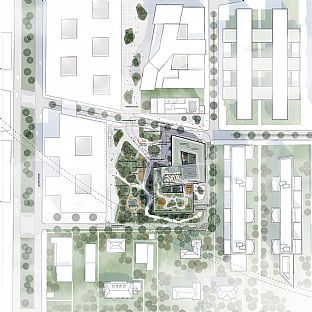24.2.2023
Wins competition for new research centre
C.F. Møller Architects wins the competition for the University of Hamburg's new HAFUN research building in Science City Hamburg Bahrenfeld, Germany.
The planning of the new HAFUN research building in Science City Hamburg Bahrenfeld can begin: On Friday, 24 February, Science Senator Katharina Fegebank revealed the winning design by C.F. Møller Architects for the ambitious new cutting-edge research centre.
HAFUN stands for Hamburg Fundamental Interactions Laboratory. This is where scientists from the University of Hamburg's Cluster of Excellence Quantum Universe will work and conduct research in the future - pursuing exciting questions such as what is dark matter and how did it come into being? The new research building is being constructed in the developing Science City Hamburg Bahrenfeld, in direct vicinity of the University of Hamburg's latest physics buildings: HARBOR and CHYN. Outstanding research competence in physics will thus be bundled in the Science City Hamburg Bahrenfeld, to allow close networking on site and create the best possible use of the synergies between their research fields.
Hard science in attractive surroundings
The new HAFUN is set to be a landmark for the Science City campus that will house both high-tech underground laboratory facilities and open environments for knowledge sharing and communication.
The Science City Bahrenfeld is a “centre of excellence” in Germany and Europe. HAFUN is key in bringing together two research centres and providing facilities for offices, meeting places and conferences, as well as partially underground laboratories with extremely sensitive equipment for research into, among other things, quantum physics, cosmic radiation and gravitational waves, which require complete shielding from interference and vibrations.
The building consists of two atrium buildings, linked by a corner in each volume. This creates a building geometry like a double loop, which with one unifying facade provides a recognisable and iconic building, which in combination with its landscape design adapts to its surroundings. The building steps down with green roof gardens towards the residential area to the south and opens towards the existing campus to the west. Interconnecting volumes create angles for outdoor spaces around the building with green terraces and gardens that merge with the volumes' courtyards, appearing open and welcoming. Here, the building's entrance is centrally located where the two courtyard buildings are linked.

